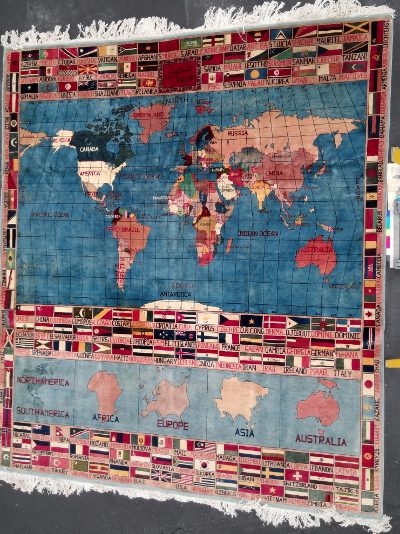ID#- 549,
Man on Elephant in Bottom corner,
190 x 294 cm
ID#- 751,
Map and Landscape with Lion/Deer,
96 x 150 cm
ID#- 755,
Chechen War Rug,
173 x 175 cm

ID#- 767,
Dragon Ali Kwaja,
198 x 290 cm
ID#- 921,
No 2016 pics
F16 Rug with Floral Design,
118 x 203 cm
ID#- 1092,
Ambush Sumac,
196 x 277 cm
ID#- 1393,
Double Prayer Rug,
119 x 203 cm
ID#- 1434,
Large Farah,
168 x 246 cm
ID#- 1435,
Large Afghan Map Rug,
196 x 279 cm
ID#- 1436,
Large Tupac,
196 x 279 cm

ID#- 1701,
2005 Signed Giant World Map Rug
Price on request,
272 x 312 cm
ID#- 2060,
Green Diamond Herati,
101 x 216 cm
ID#- 2061,
Green Grenade Guard Stripe,
114 x 206 cm

ID#- 10010,
Shanama War Rug about April 1979 Uprising in Heart,
137 x 239 cm